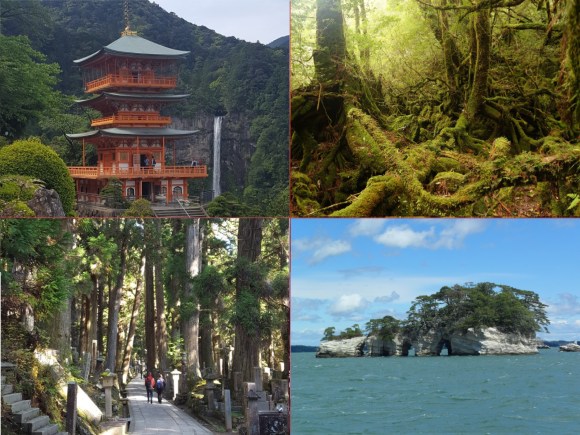
The second part of our Japanese bucket list dedicated to all travel enthusiasts!
Earlier this week, we began to take a look at some of Japan’s top travel destinations, focusing on one place representative of each prefecture. While Part I focused on 25 prefectures of northeastern and central Japan, from Hokkaido to Shiga, Part II begins with Kyoto Prefecture and moves south through the country all the way to the islands of Okinawa Prefecture.
26. Kyoto Prefecture – Saihoji (西芳寺)
西芳寺(苔寺)【京都府】 「古都京都の文化財」として世界遺産に登録されている。一般の拝観は不可で、往復はがきによる事前申し込み制となっている pic.twitter.com/pBxVSIkmxc
— ★厳選★世界遺産 (@gensen_isan) December 12, 2016
Just for the record, it’s impossible to choose only place to highlight for Japan’s cultural heart and former capital city. However, instead of the heavily visited Kinkakuji, Ginkakuji, Kiyomizudera, or Fushimi Inari Shrine, we’ve decided to go with Saihoji, a slightly less known but just as rewarding spot to visit. Affectionately dubbed the “moss temple,” it’s particularly famous for its moss garden and pond shaped like the kanji for “heart” (心). Visitors should note that reservations are required for entrance as a measure to protect the delicate moss. All visitors must also agree to participate in a special spiritual activity which changes daily, such as sitting meditation or copying sutras.
27. Osaka Prefecture – Iwafune Shrine (磐船神社)
磐船神社へ pic.twitter.com/TOtSwXrnVY
— 蚩尤 (@battleshipyard) December 16, 2016
This large, boat-shaped rock is said to house a Shinto guardian deity and to be the vessel on which the gods descended from the heavens. Explore the sacred caves and end near the Gate of the Celestial Rock Cave, the very door that the Sun Goddess Amaterasu is said to have secluded herself behind in the myths after her brother’s ill-mannered behavior, thereby depriving the land of light until she was enticed to peek outside again.
28. Hyogo Prefecture – Takeda Castle Ruins (竹田城跡)
天空の城 竹田城(兵庫) pic.twitter.com/gdZwQmLvMx
— 心惹かれる一枚 (@heart_great_pic) December 23, 2016
Though no longer intact, the ruins of Takeda Castle are still a popular place to visit due to their location at a high elevation. In the right conditions, the site appears to be floating in the clouds, like a real-world castle in the sky.
29. Nara Prefecture – Horyuji (法隆寺)
https://twitter.com/freeairfee/status/812191737149988864As with Kyoto, the former capital city of Nara houses so many important historical monuments that UNESCO decided to name them a World Heritage Site collectively. Buddhist temple Horyuji is included on the list and is a standard stop on any tourist’s agenda. Its importance for not only Japanese cultural history but world history is underscored by its five-tiered pagoda, which is one of the oldest, if not the oldest, surviving wooden structures in the world.
30. Wakayama Prefecture – Nachi Falls (那智の滝)
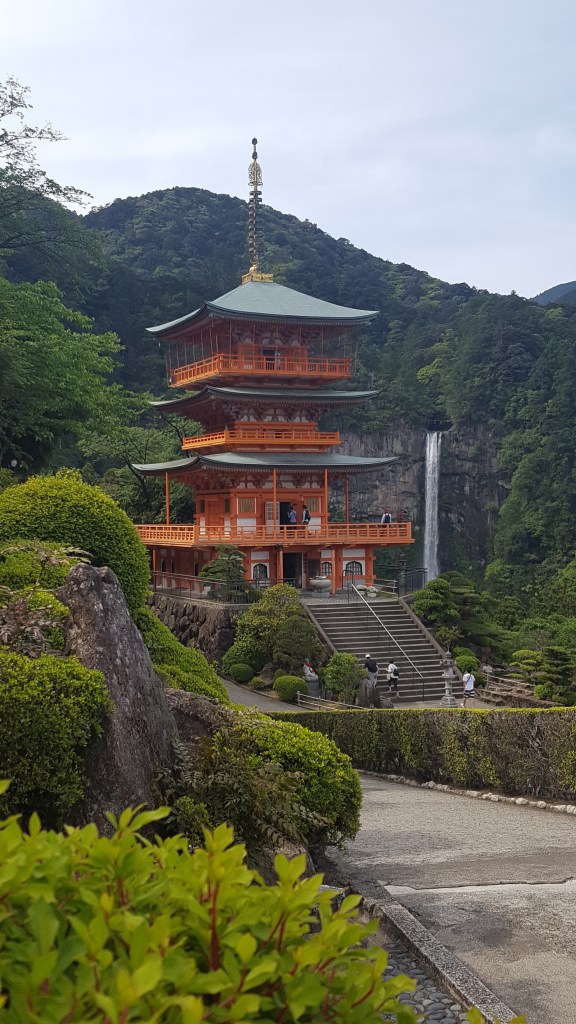
Nachi Falls is Japan’s tallest waterfall with a single, uninterrupted drop, measuring 436 feet (133 meters) high. It’s part of UNESCO’s “Sacred Sites and Pilgrimage Routes in the Kii Mountain Range” World Heritage Site. The falls are often photographed together with the three-story pagoda of Seigantoji nearby.
31. Tottori Prefecture – Tottori Sand Dunes (鳥取砂丘)
https://twitter.com/zekkei_japan/status/812195666776592384Tottori boasts the only large sand dunes in all of Japan. Incidentally, Tottori was also the last prefecture to gain a Starbucks, and boy did the local Sunaba coffee chain take it hard (sunaba means “sand pit” and is also a pun on Starbucks’ Japanese nickname, sutaba).
32. Shimane Prefecture – Inasa Beach (稲佐の浜)
一度は行ってみたい。
— 倉田 知靏子 (@kuratatiduko) December 30, 2016
島根県、稲佐の浜。
pic.twitter.com/L8PnZymBBv
Modern-day Shimane Prefecture is home to Izumo Grand Shrine, which is second in importance only to Ise Grand Shrine in Mie Prefecture. The nearby Inasa Beach is supposedly the spot where eight million Shinto deities congregate every year in the tenth month of the lunar calendar. The Izumo Grand Shrine welcomes them with a ceremony on the shore and then hosts the Kamiari Festival to honor their presence.
33. Okayama Prefecture – Kurashiki Bikan Historical Quarter (倉敷市美観地区)
https://twitter.com/Murakami_Kenta/status/812193038697046016Kurashiki City’s picturesque historical district preserves examples of Edo-period wooden merchant warehouses and a canal lined by weeping willows. Thankfully, there are no electrical poles to mar the authenticity of your experience (but you might spot some denim-flavored food)!
34. Hiroshima Prefecture – Sensuijima (仙酔島)
今年の締めは仙酔島で寒中水泳 pic.twitter.com/QR4DzvAeRr
— AKIRAYA-REX (@meganeman0910) December 31, 2016
Sensui Island is often overshadowed by one of Japan’s all-time famous sights, the red floating torii of Itsukushima Shrine, but it makes for a pleasant and less-crowded alternative trip. Its name translate as “Drunken Sage Island,” a reference to its reputation as being “beautful enough to make even mountain sages drunk.” Camping and hiking are popular ways to spend time there, but please don’t feed the wild tanuki.
35. Yamaguchi Prefecture – The Susa Hornfels (須佐のホルンフェルス)
https://twitter.com/superviewJapan/status/806644514962210817Geologists would love this spot by the sea in the former castle town of Hagi, where banded hornfels (a metamorphic rock consisting of layers of sandstone and shale) is beautifully exposed to the elements.
36. Tokushima Prefecture – Iya Kazurabashi (祖谷のかずら橋)
徳島の秘境・奥祖谷かずら橋。剣山登山のついでに立ち寄ったけども、紅葉と原始的な造りの橋のセットがなかなかの雰囲気で、エメラルドグリーンの渓谷に滝もあり、見応え十分の場所でした。https://t.co/zGADRlpz6R pic.twitter.com/u31R4uw3zo
— みやっち (@JunMiya85) December 20, 2016
This 148-foot (45-meter)-long suspension bridge was constructed from vines in the secluded Iya Valley region of Tokushima. Feeling a bit on edge? Don’t worry, the bridge is rebuilt every three years and has hidden steel cables for reinforcement!
37. Kagawa Prefecture – Benesse Art Site Naoshima (ベネッセアートサイト直島)
https://twitter.com/55_travel/status/810088644014837760According to Benesse’s official English-language website, “Our fundamental aim is to create significant spaces by bringing contemporary art and architecture in resonance with the pristine nature of the Seto Inland Sea, a landscape with a rich cultural and historical fabric.” Naoshima and the other surrounding islands are also the setting of the Setouchi Triennale Art Festival, which draws huge crowds of art aficionados (including us in 2016).
38. Ehime Prefecture – Aoshima Cat Island (青島 猫の島)
エサ場では大きな紙皿8枚を使って、猫たちに「ご飯」(キャットフード)が配られていました。
— 猫の島 青島 (@aoshima_cat) January 2, 2017
猫たちはムシャムシャと音を立てながら、おいしそうに食べていました。
猫たちの「ご飯」の奪い合いはありませんでした。
どの猫もケンカをせずに、食べていました。 pic.twitter.com/FliN4uf7de
This wouldn’t be a RocketNews24 article without at least one mention of a cat island! If you had to choose only one to visit, the tiny island of Aoshima is probably the best bang for your buck due to the disproportionate number of cats to humans on the island. It’s a veritable cat lover’s paradise!
39. Kochi Prefecture – Kochi Castle (高知城)
高知城でした。
— 黒縞瑪瑙の髪結いサン (@nue_tolove) December 23, 2016
現存天守のお城です。今晩はイルミネーションだったみたいですが、見ずに帰ります。 pic.twitter.com/RIRMcWe8L2
Kochi Castle is another one of Japan’s 12 surviving original castles. Its location in downtown Kochi City is perfect for visitors who want to get a taste of the past before they head back to the modern world.
40. Fukuoka Prefecture – Kawachi Wisteria Garden (河内藤園)
福岡の河内藤園🌺
— World's✨絶景スポット (@worlds_spot) December 5, 2016
海外メディアで「世界の絶景10」として紹介されたこともある場所❗
この藤園は、約3千坪の敷地内に青紫やピンク、白など22種、約100本以上の藤が咲き誇る夢の様な楽園です✨ pic.twitter.com/BXkWgHpbep
We’ve covered this breathtaking garden multiple times in the past, but it’s worth repeating how amazing it is. What could be more romantic than strolling through one of the park’s ethereal wisteria tunnels?
41. Saga Prefecture – Nanatsugama (七ツ釜)
https://twitter.com/shimiru_zekkei/status/815555773929394176While its name includes the kanji character for “seven” (七), there are actually a greater number of marine caves chiseled into these basalt cliffs after years of wave-pounding erosion. Visitors can explore the spectacle on a boat tour departing from the nearby bay.
42. Nagasaki Prefecture – Hashima (端島)
軍艦島 国:日本「長崎県」 名称:軍艦島(正式名称は端島) 1974年に無人島となり廃墟化しているが、近年、産業遺産としても注目されている pic.twitter.com/B1oufhlIGF
— 世界の投棄された廃墟たち (@haikyo_world) December 23, 2016
Hashima, more commonly known as Gunkanjima, or “Battleship Island,” is an uninhabited island off of Nagasaki Port which served as a coal mine until 1974. The ghostly remnants of the crumbling buildings have served as the backdrop for films such as 2012’s Skyfall and 2015’s live-action Attack on Titan. You can also explore the island from the comfort of your home using the digital 3-D model created by academics at Nagasaki University.
43. Kumamoto Prefecture – Nabega Falls (鍋ヶ滝)
鍋ヶ滝【熊本県】
— 日本の観光名所bot (@japanese_meisyo) December 21, 2016
落差9m、幅20mで、そんなに高い滝ではないが、滝の裏側に入ることができる珍しい滝。落水は水のカーテン状で美しい。「おーいお茶」「生茶」のCMロケ地になったことで、観光スポットとして知られてきた。 pic.twitter.com/HOQVsP7bDj
Nabega Falls’ cascading curtain of water is absolutely spellbinding, and at times appears to resemble rays of sunlight. In fact, it’s beautiful enough to have been featured in many commercials for green tea and other drinks! You can even walk past the curtain of water and view the mystical sight from behind.
44. Oita Prefecture – Hells of Beppu (別府地獄めぐり)
別府地獄めぐり なんか凄い景色です pic.twitter.com/8O9O620bl4
— お得旅行術師 (@tabibito3651) December 11, 2016
Don’t be alarmed–despite the name, these “hells” are actually eight highly sought-after geothermal (literal) hot spots in one of the country’s most famous hot springs areas. Unfortunately, they’re for viewing only, but we don’t see why anyone would want to immerse themselves in boiling mud bubbles or the infamous “blood pond” anyway.
45. Miyazaki Prefecture – Takachiho Gorge (高千穂峡)
https://twitter.com/hisuitree/status/817389603782938625This gorge boasts precipitous cliffs and column-like rock formations formed by volcanic activity long, long ago. Take a boat ride down the Gokase River to marvel at the cliffs and an impressive waterfall.
46. Kagoshima Prefecture – Yakushima (屋久島)
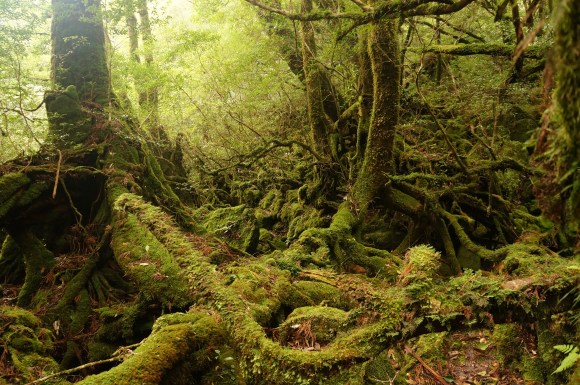
Yakushima’s areas of primeval forest were real-world inspiration for the scenery in Studio Ghibli’s Princess Mononoke. The island’s humid subtropical climate has allowed lush vegetation to flourish. A single jomonsugi Japanese cedar is estimated to be anywhere from 2,170-7,200 years old.
47. Okinawa Prefecture – Yonagunijima (与那国島)
【与那国島の海底遺跡】
— 世界の謎 (@world_nazo) January 4, 2017
与那国島海底地形は、沖縄県八重山諸島与那国島南部の新川鼻沖の海底で発見された
人工的に加工されたとも考えられる巨石群からなることから、海底遺跡と考える説もあり、この立場からは与那国海底遺跡とも呼ばれる。 pic.twitter.com/ZGov3s4QCk
Off the coast of one of Okinawa’s Yaeyama Islands (and the westernmost inhabited island of Japan) lies a peculiar puzzle. Is the so-called “Yonaguni Monument” (re)discovered in 1986 by local divers on the bottom of the sea man-made, or are the stair-like formations natural? Scientists continue to debate the origin of this underwater structure today.
Japan only has 47 prefectures, but to make a nice, round 50 entries, we’ve added three more bonus destinations.
48. BONUS: Miyagi Prefecture – Matsushima (松島)
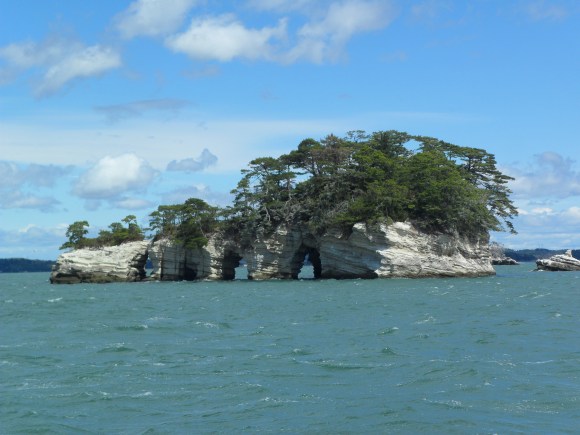
One of the traditional “Three Beautiful Views of Japan,” Matsushima consists of over 260 small, pine-covered islands. Don’t forget to try one of the local oyster specialties, sip tea while admiring the ocean view from the historical Kanrantei building, or go on a short boat cruise to explore the bay.
49. BONUS: Wakayama Prefecture – Mt. Koya (高野山)
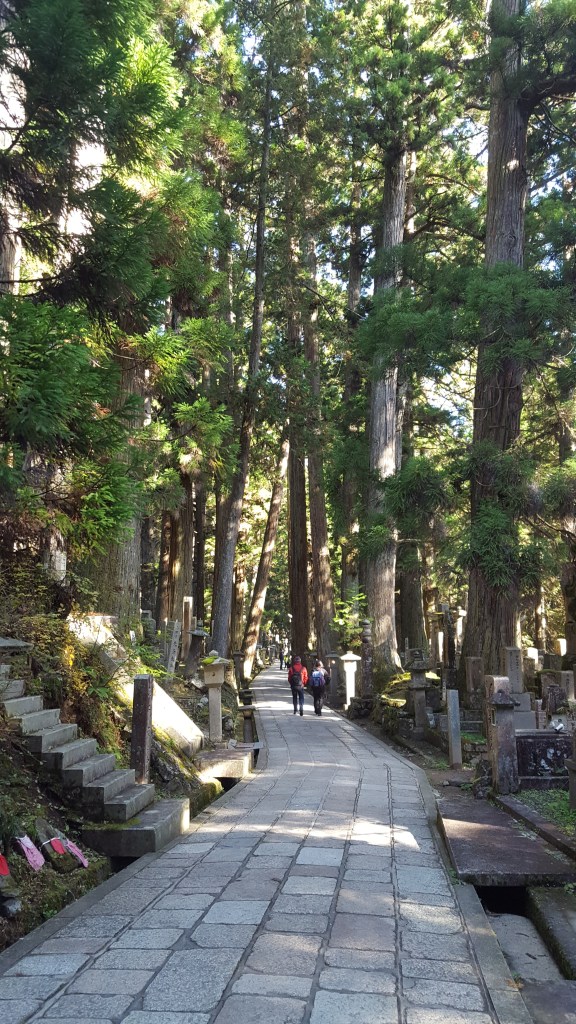
Contrary to popular belief, Mt. Koya is not the name of a single mountain, but is a range of mountains housing the headquarters of the Shingon sect of Japanese Buddhism. The area is included on the previously-mentioned UNSECO “Sacred Sites and Pilgrimage Routes in the Kii Mountain Range.” Visitors can stay overnight in temple lodgings to experience a bit of the daily lifestyle of a monk.
50. BONUS: Yamagata Prefecture – Ginzan Onsen (銀山温泉)
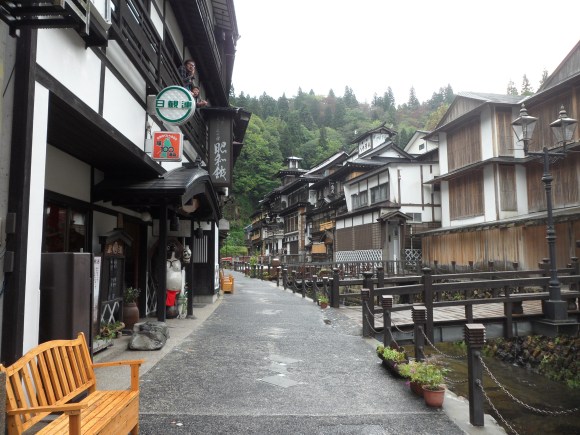
Our last entry takes us back up north to one of Japan’s most beautiful hot spring towns lined with Taisho-period (1912-1926) Japanese inns evoking a nostalgic atmosphere. The town truly becomes magical at night when the gas lamps are lit and visitors stroll about in comfortable yukata kimono.
Congratulations, you’ve made it to the end of the list! Part II also showcased some spectacular sites, including impressive waterfalls, castles, and hot springs. Which of the 50 places featured in this two-part series are now at the top of your Japan travel itinerary? Let us know in the comments section below!
Reference: Naver Matome
Featured image: Krista Rogers, Laura Bocon, Danielle Huffman (edited by RocketNew24)
A special thanks to Laura Bocon and Danielle Huffman for contributing their photos to this article

 Quiz time! How many of these photos of Japanese places can you identify?【Photos】
Quiz time! How many of these photos of Japanese places can you identify?【Photos】 Shikoku Island holds world landmark lookalike photography contest judged by AI
Shikoku Island holds world landmark lookalike photography contest judged by AI The most popular places in Japan for viewing sakura in 2024, according to local travel agency
The most popular places in Japan for viewing sakura in 2024, according to local travel agency Fujiyama Shrine has nothing to do with Mt. Fuji, everything to do with springtime beauty【Photos】
Fujiyama Shrine has nothing to do with Mt. Fuji, everything to do with springtime beauty【Photos】 Nine places to take unforgettable social media photos in Japan
Nine places to take unforgettable social media photos in Japan Red light district sushi restaurant in Tokyo shows us just how wrong we were about it
Red light district sushi restaurant in Tokyo shows us just how wrong we were about it Sandwiches fit for a sumo served up in Osaka【Taste Test】
Sandwiches fit for a sumo served up in Osaka【Taste Test】 Pokémon Sleep camping suite and guestrooms coming to Tokyo Hyatt along with giant Snorlax burgers
Pokémon Sleep camping suite and guestrooms coming to Tokyo Hyatt along with giant Snorlax burgers Tokyo Tsukiji fish market site to be redeveloped with 50,000-seat stadium, hotel, shopping center
Tokyo Tsukiji fish market site to be redeveloped with 50,000-seat stadium, hotel, shopping center Japanese ramen restaurants under pressure from new yen banknotes
Japanese ramen restaurants under pressure from new yen banknotes Akihabara pop-up shop sells goods made by Japanese prison inmates
Akihabara pop-up shop sells goods made by Japanese prison inmates Anime girl English teacher Ellen-sensei becomes VTuber/VVTUber and NFT
Anime girl English teacher Ellen-sensei becomes VTuber/VVTUber and NFT Starbucks Japan adds a Motto Frappuccino to the menu for a limited time
Starbucks Japan adds a Motto Frappuccino to the menu for a limited time McDonald’s new Happy Meals offer up cute and practical Sanrio lifestyle goods
McDonald’s new Happy Meals offer up cute and practical Sanrio lifestyle goods Beautiful Red and Blue Star luxury trains set to be Japan’s new Hokkaido travel stars
Beautiful Red and Blue Star luxury trains set to be Japan’s new Hokkaido travel stars All-you-can-drink Starbucks and amazing views part of Tokyo’s new 170 meter-high sky lounge
All-you-can-drink Starbucks and amazing views part of Tokyo’s new 170 meter-high sky lounge More foreign tourists than ever before in history visited Japan last month
More foreign tourists than ever before in history visited Japan last month French Fries Bread in Tokyo’s Shibuya becomes a hit on social media
French Fries Bread in Tokyo’s Shibuya becomes a hit on social media Studio Ghibli releases new action figures featuring Nausicaä of the Valley of the Wind characters
Studio Ghibli releases new action figures featuring Nausicaä of the Valley of the Wind characters New private rooms on Tokaido Shinkansen change the way we travel from Tokyo to Kyoto
New private rooms on Tokaido Shinkansen change the way we travel from Tokyo to Kyoto Starbucks reopens at Shibuya Scramble Crossing with new look and design concept
Starbucks reopens at Shibuya Scramble Crossing with new look and design concept Studio Ghibli glasses cases let anime characters keep an eye on your spectacles
Studio Ghibli glasses cases let anime characters keep an eye on your spectacles Beautiful Ghibli sealing wax kits let you create accessories and elegant letter decorations【Pics】
Beautiful Ghibli sealing wax kits let you create accessories and elegant letter decorations【Pics】 Studio Ghibli releases Kiki’s Delivery Service chocolate cake pouches in Japan
Studio Ghibli releases Kiki’s Delivery Service chocolate cake pouches in Japan New definition of “Japanese whiskey” goes into effect to prevent fakes from fooling overseas buyers
New definition of “Japanese whiskey” goes into effect to prevent fakes from fooling overseas buyers Our Japanese reporter visits Costco in the U.S., finds super American and very Japanese things
Our Japanese reporter visits Costco in the U.S., finds super American and very Japanese things Studio Ghibli unveils Mother’s Day gift set that captures the love in My Neighbour Totoro
Studio Ghibli unveils Mother’s Day gift set that captures the love in My Neighbour Totoro New Japanese KitKat flavour stars Sanrio characters, including Hello Kitty
New Japanese KitKat flavour stars Sanrio characters, including Hello Kitty New Pokémon cakes let you eat your way through Pikachu and all the Eevee evolutions
New Pokémon cakes let you eat your way through Pikachu and all the Eevee evolutions Disney princesses get official manga makeovers for Manga Princess Cafe opening in Tokyo
Disney princesses get official manga makeovers for Manga Princess Cafe opening in Tokyo Sales of Japan’s most convenient train ticket/shopping payment cards suspended indefinitely
Sales of Japan’s most convenient train ticket/shopping payment cards suspended indefinitely Sold-out Studio Ghibli desktop humidifiers are back so Totoro can help you through the dry season
Sold-out Studio Ghibli desktop humidifiers are back so Totoro can help you through the dry season Japanese government to make first change to romanization spelling rules since the 1950s
Japanese government to make first change to romanization spelling rules since the 1950s Ghibli founders Toshio Suzuki and Hayao Miyazaki contribute to Japanese whisky Totoro label design
Ghibli founders Toshio Suzuki and Hayao Miyazaki contribute to Japanese whisky Totoro label design Doraemon found buried at sea as scene from 1993 anime becomes real life【Photos】
Doraemon found buried at sea as scene from 1993 anime becomes real life【Photos】 Tokyo’s most famous Starbucks is closed
Tokyo’s most famous Starbucks is closed One Piece characters’ nationalities revealed, but fans have mixed opinions
One Piece characters’ nationalities revealed, but fans have mixed opinions We asked a Uniqlo employee what four things we should buy and their suggestions didn’t disappoint
We asked a Uniqlo employee what four things we should buy and their suggestions didn’t disappoint Princesses, fruits, and blacksmiths: Study reveals the 30 most unusual family names in Japan
Princesses, fruits, and blacksmiths: Study reveals the 30 most unusual family names in Japan San’in, Japan is breathtakingly beautiful especially when captured with a 4K video camera【Video】
San’in, Japan is breathtakingly beautiful especially when captured with a 4K video camera【Video】 The only path to this Nagasaki Shinto shrine gets swallowed by the sea every day【Video】
The only path to this Nagasaki Shinto shrine gets swallowed by the sea every day【Video】 Happy New Year! Japan ranks top spots to view the first sunrise of 2019
Happy New Year! Japan ranks top spots to view the first sunrise of 2019 Real Buddhist monk shows off hot (and sweet) EDM dance moves in Mount Koya video
Real Buddhist monk shows off hot (and sweet) EDM dance moves in Mount Koya video 8 Japan-related events to look forward to in 2016!
8 Japan-related events to look forward to in 2016! Japanese prefecture that named a Pokémon as its governor to install 16 new Pokémon manholes
Japanese prefecture that named a Pokémon as its governor to install 16 new Pokémon manholes We head to Fukuoka’s Kawachi Wisteria Garden to see the famous blossoms with our own eyes
We head to Fukuoka’s Kawachi Wisteria Garden to see the famous blossoms with our own eyes Step inside a mystical, dazzling display of illuminations at the Flower Garden of Lights
Step inside a mystical, dazzling display of illuminations at the Flower Garden of Lights Online survey sheds light on prefectural personality rankings of Japanese people
Online survey sheds light on prefectural personality rankings of Japanese people TripAdvisor Japan announces the country’s 10 favorite shrines and temples
TripAdvisor Japan announces the country’s 10 favorite shrines and temples Which parts of Ishikawa are OK to travel to after Noto quake? Government shares guideline map
Which parts of Ishikawa are OK to travel to after Noto quake? Government shares guideline map Shiraishi Island needs YOUR character ideas!
Shiraishi Island needs YOUR character ideas! Volcanoes, castles and more: 10 of Japan’s best drone-shot videos to give you wanderlust【Video】
Volcanoes, castles and more: 10 of Japan’s best drone-shot videos to give you wanderlust【Video】 Three reasons you should go to Kyoto right now
Three reasons you should go to Kyoto right now 10 gorgeous, must-visit places to see the autumn leaves in Japan
10 gorgeous, must-visit places to see the autumn leaves in Japan
Leave a Reply